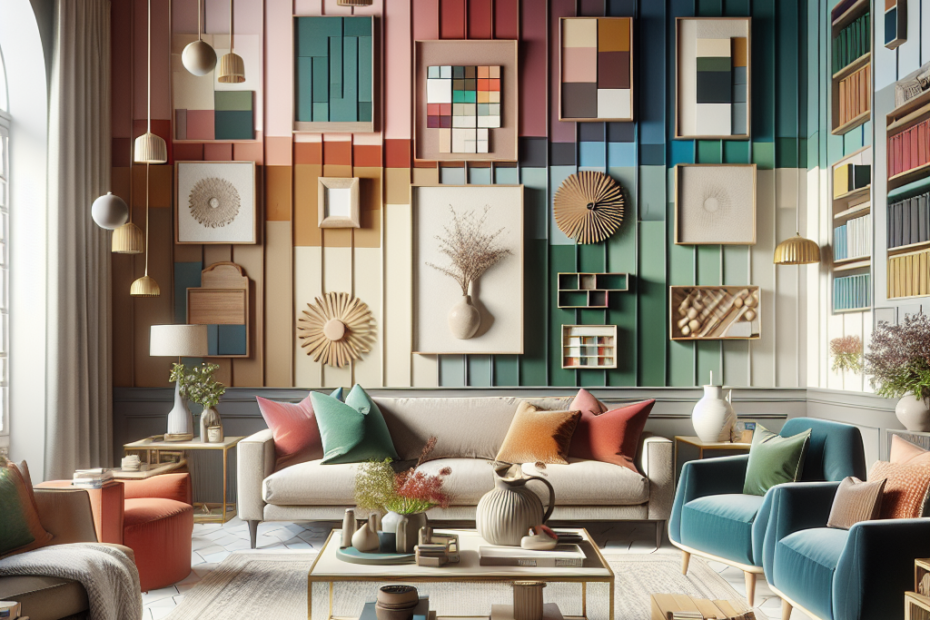“`html
When people think about designing a room, they often focus on furniture or layout. However, layering colors in design can make a real difference in how a space looks and feels. By using colors thoughtfully, they can create depth, interest, and personality in any room. Many people might not realize that colors can even change how big or small a room feels. Understanding color layering is a handy skill for anyone who wants to refresh their living space.
Why Layering Colors is Important
Layering colors is not just about using different shades; it’s about creating harmony and contrast that captivates the eye. According to a study published by Architectural Digest, rooms with layered colors are perceived to be 30% more aesthetically pleasing than those with flat colors. This approach allows individuals to take control of the room’s mood and personality.
Basic Principles of Color Layering
To start layering colors effectively, they can follow these basic principles:
- Base Color: Choose a neutral or soft base color. It serves as the foundation for the other colors.
- Accent Colors: Accents are often bolder, and they should complement the base. These can be used on a smaller scale, such as with pillows or artwork.
- Pop of Color: Add in a pop of color to make the space vibrant. This could be a bright vase or a colorful chair.
Layering Techniques
There are several techniques to layer colors in design:
1. Monochromatic Palette
A monochromatic color scheme uses variations in lightness and saturation of a single color. This technique provides a sophisticated and calming feel. For instance, using different shades of blue can bring about a serene and cohesive look.
2. Contrast and Complement
Using contrasting colors can add interest and depth. Complementary colors are those opposite each other on the color wheel, such as red and green, which when used together, can make each stand out. According to Color Psychology, such combinations can affect mood and can even stimulate creativity in some individuals.
| Technique | Description | Effect |
|---|---|---|
| Monochromatic Palette | Uses variations of a single color | Cohesive, serene |
| Contrast and Complement | Uses contrasting colors for effect | Dynamic, engaging |
Practical Tips for Color Layering
- Sample Colors: Always use color samples on walls and observe them in different lights throughout the day.
- Textures Matter: Different textures can add to the depth that colors create. Consider using materials like velvet or linen.
- Reflect with Accessories: Mirrors and metallics can reflect colors and add another layer of dimension.
Common Mistakes to Avoid
Many times, individuals avoid bold colors or mix too many contrasting ones, leading to visual chaos. Another mistake is not considering the room’s lighting which can drastically change how colors appear. Ensuring a blending of styles is crucial to avoid disruption in the visual flow.
Benefits of Layering Colors
Besides creating depth and interest, layering colors in design fosters a personalized space that resonates with the user’s tastes. According to Science Daily, colors can significantly affect emotions and mental well-being. Bright colors can invigorate, whereas muted tones can provide a sense of calm.
Key Takeaways
- Layering colors in design is important for creating a harmonious and engaging space.
- Starting with a base color, accent colors, and a pop of color can enhance room depth.
- Monochromatic palettes and contrasting colors are effective layering techniques.
- Practical tips include using color samples, incorporating textures, and leveraging lighting.
- When done right, color layering improves room aesthetics and affects mood positively.
Frequently Asked Questions (FAQ)
- What is the best base color for layering?
Neutral tones like whites, grays, and beiges are often the best choices as they provide a versatile foundation for layers.
- Can color layering work in small spaces?
Yes, when done properly; it can make small spaces appear larger by adding depth without overcrowding.
- How can colors affect mood?
Different colors can evoke different emotions; blues and greens are calming, while reds and yellows can energize.
- Is there a limit to how many colors should be used?
A good rule is the 60-30-10 rule: 60% dominant color, 30% secondary color, 10% accent color.
- What tools can help in choosing the right color palette?
Color wheel tools and design software like Adobe Color can assist in visualizing and selecting color schemes.
“`
By understanding these principles, anyone can transform their living spaces into aesthetically pleasing havens with depth and character.
